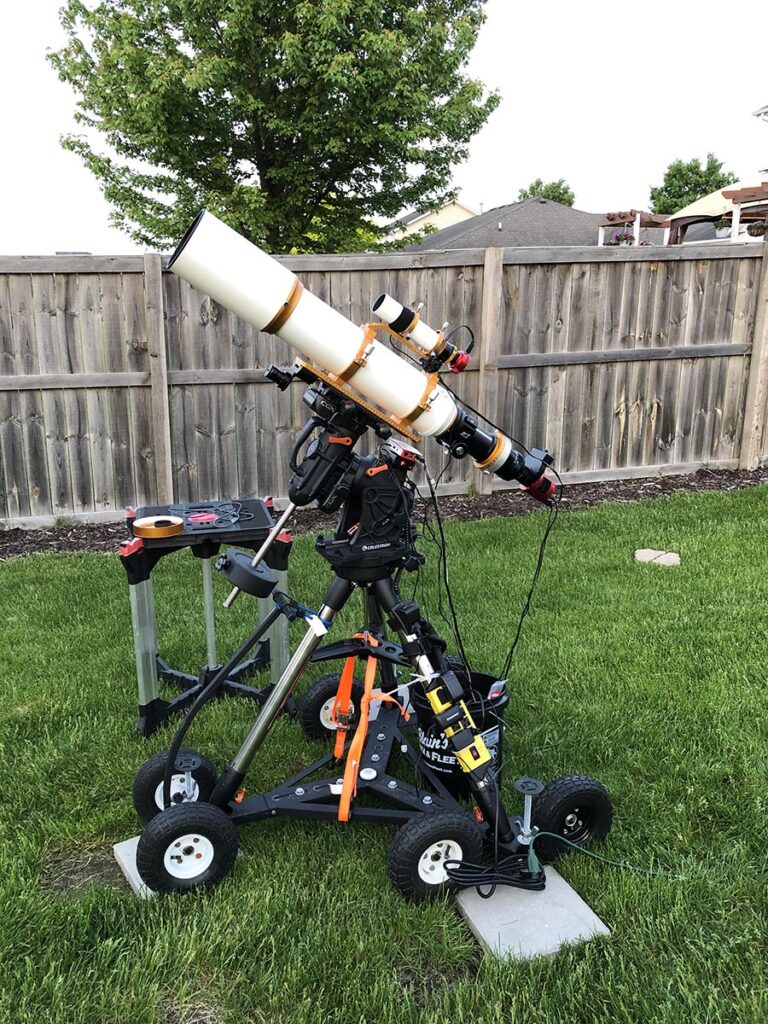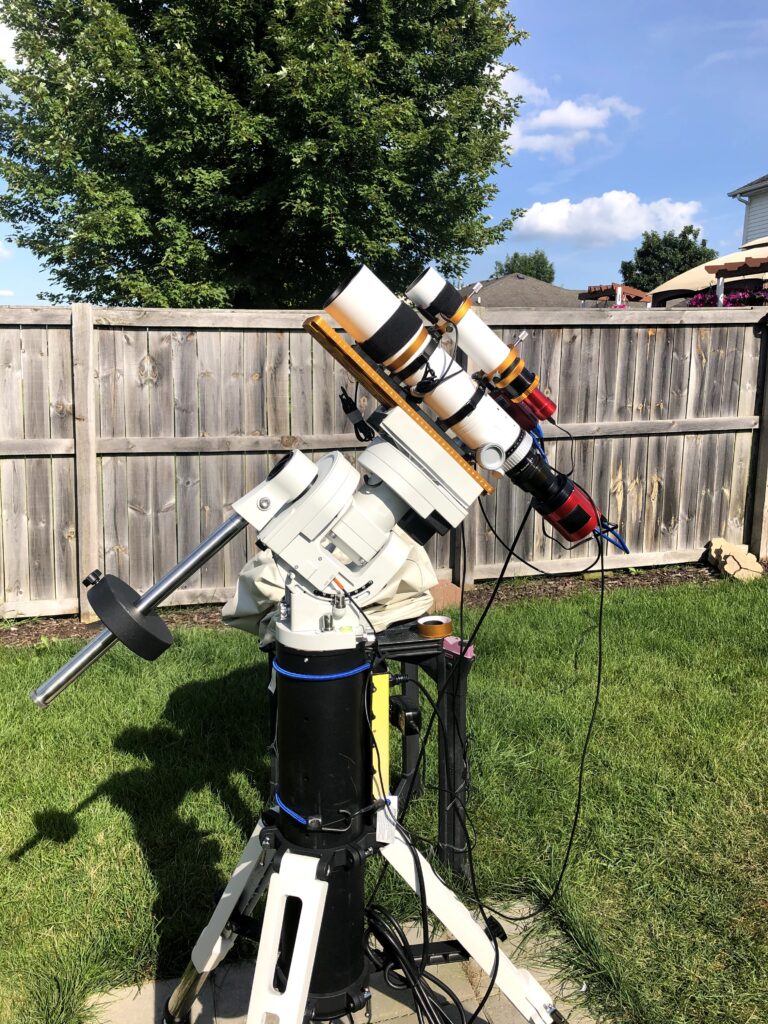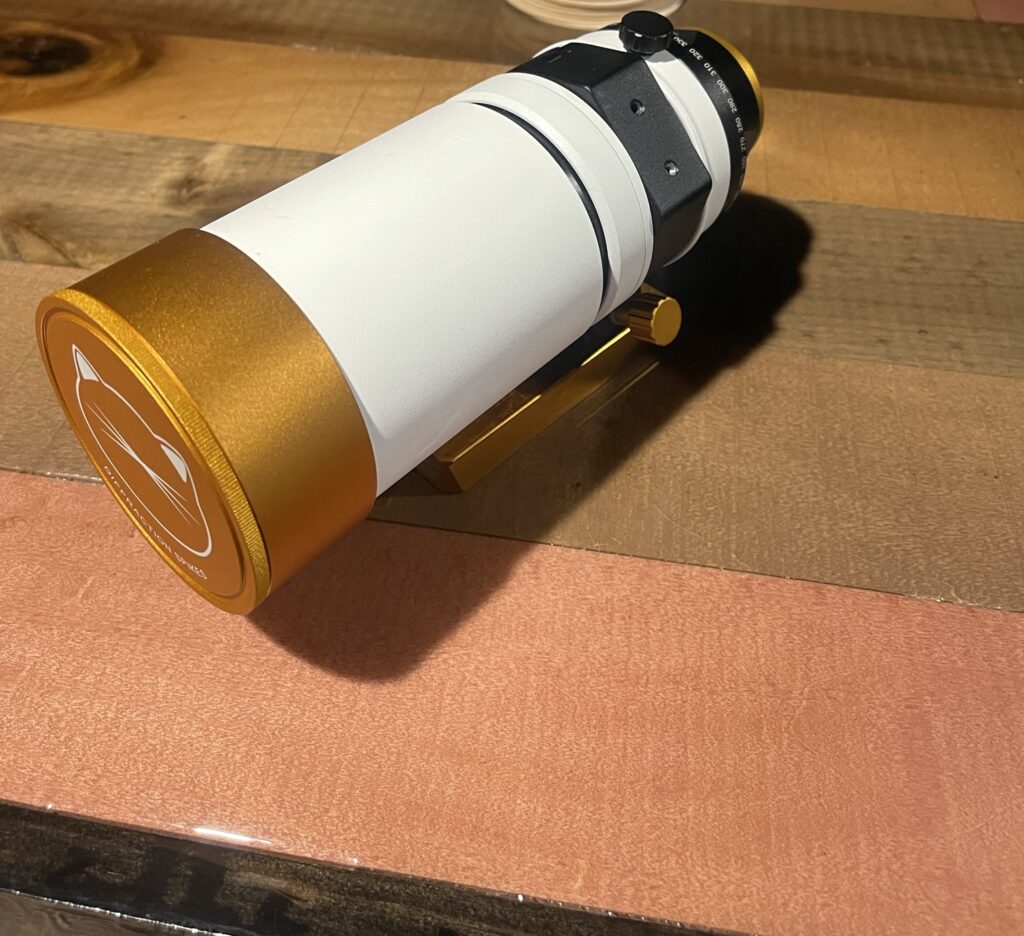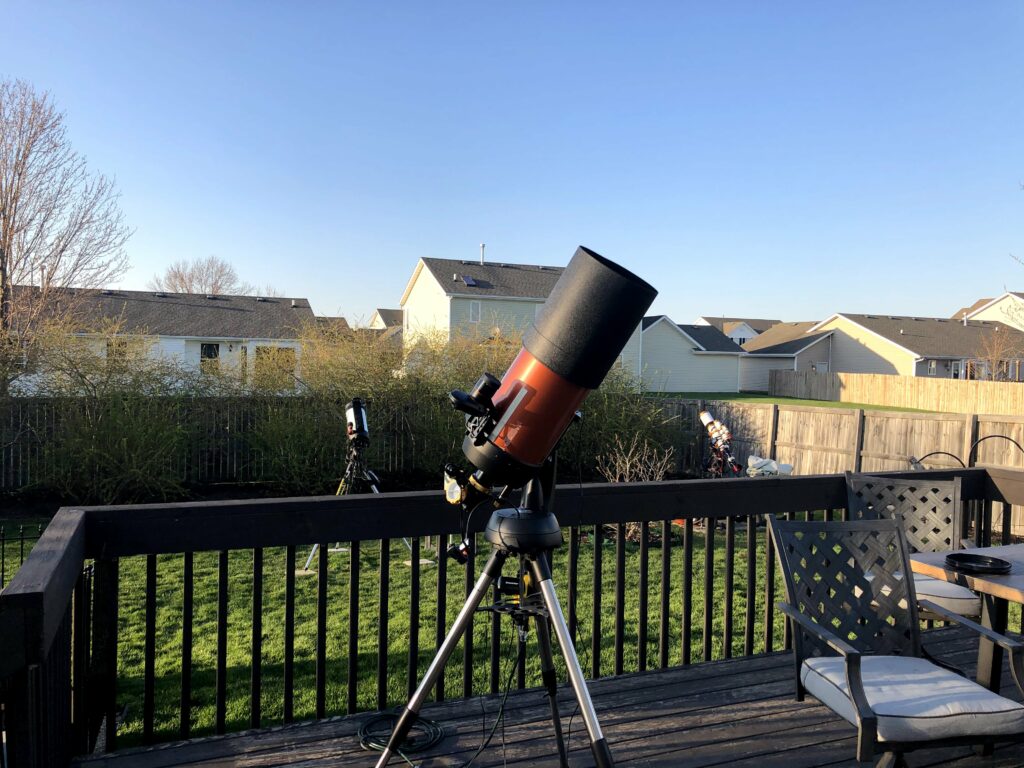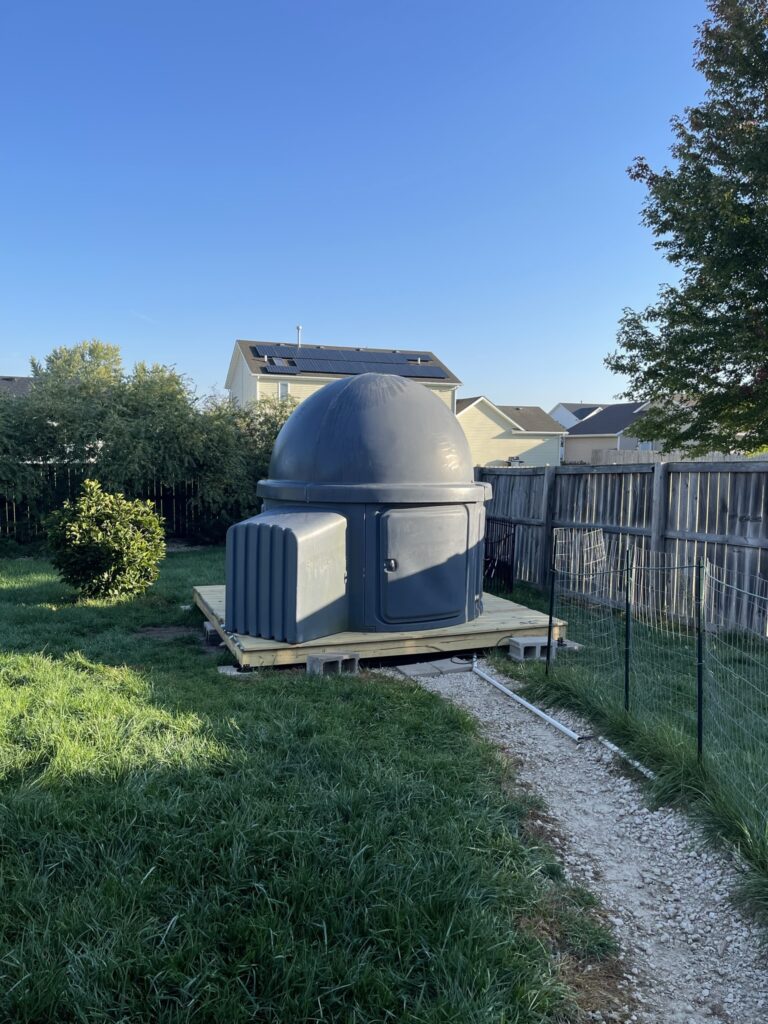
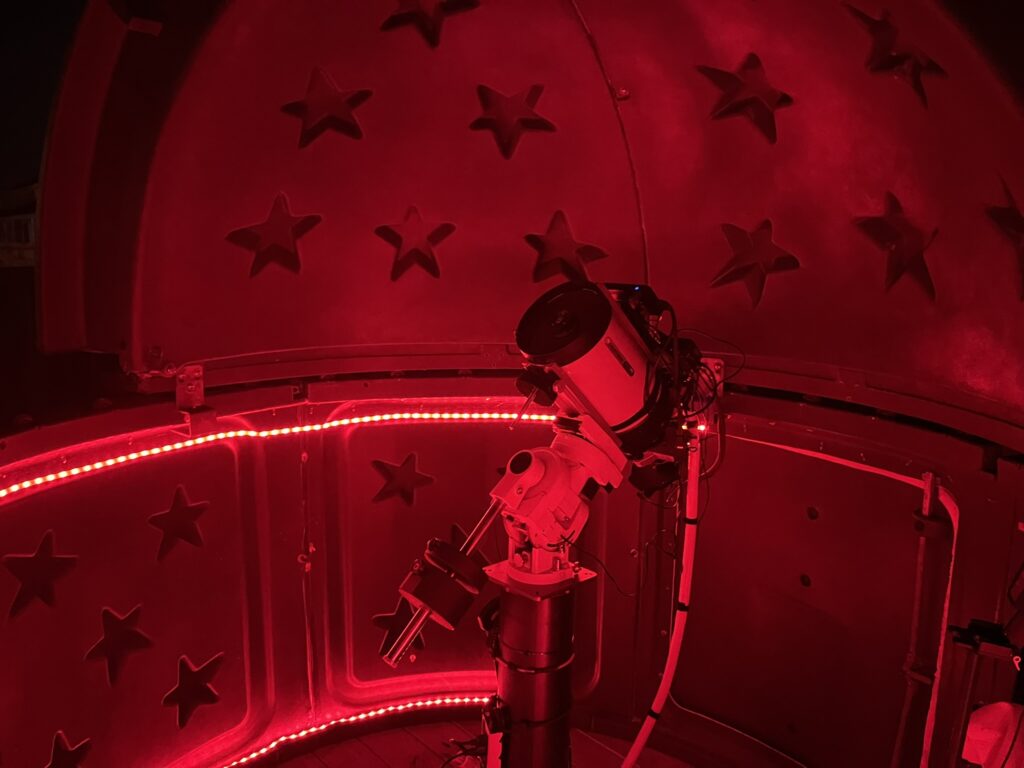
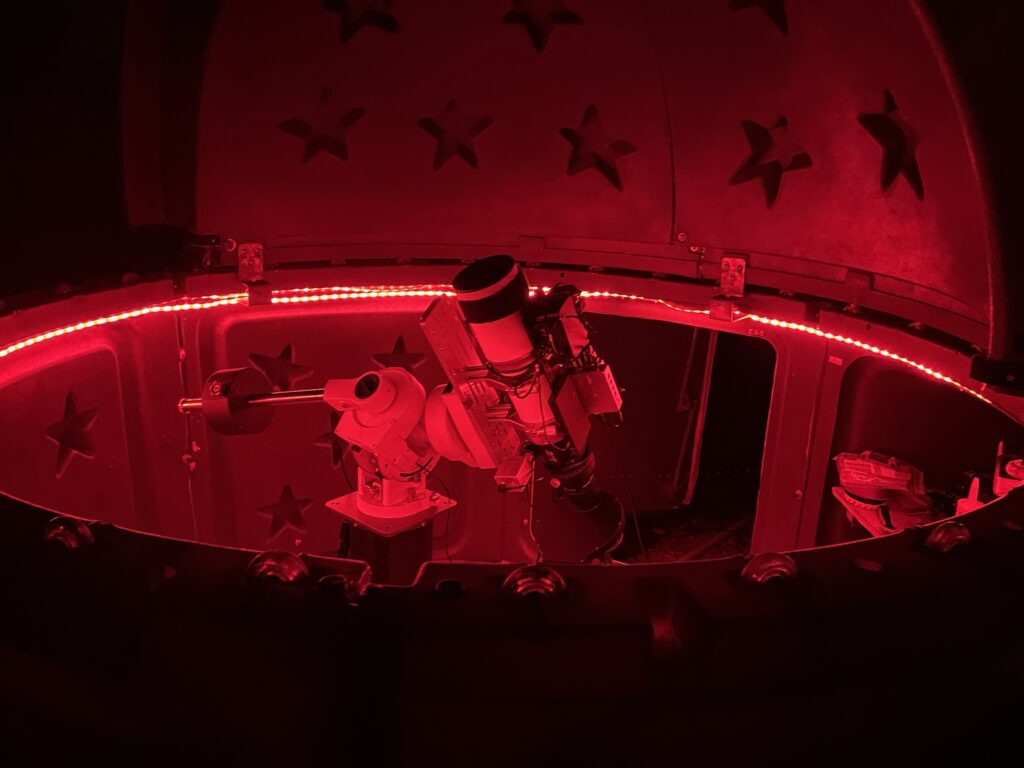
Finally!! After several years of hoping, wishing, and praying I was able to make one of my biggest “astro” dreams come true. I got a backyard observatory! For the first 5 years of my astrophotography journey, I’ve heard the stories from fellow astronomers about bringing their equipment in and out from their homes, day after day. Bottom line, we all want to set up and start imaging or observing faster. In my case there days in winter, sometimes after a brutal snow storm, I’d need shovel a path and clear my setup area from inches of snow So I could bring out my rig on its wheelybar from my garage to set up.
I’ve had my eyes on a Skyshed Pod for along time and in 2023 I was able to make it happen, and found a preowned Skyshed POD XL1.
Having a safe space for my astrophotography equipment, protected from the elements, and to just open up and begin an imaging session is truly a gamechanger.
A bit about the Skyshed Pod, it’s a manual clamshell-style observatory, perfect for backyard astronomers. This was manufactured by Wayne Parker and his team at Skyshed Observatories in Canada. The unit is very well made, strong enough to withstand hurricane-level winds and the Midwest winter snow. They have now developed their Skyshed Pod-S which includes automation and looks more like a smaller version of the traditional observatories you might see at universities or on tops of mountains.
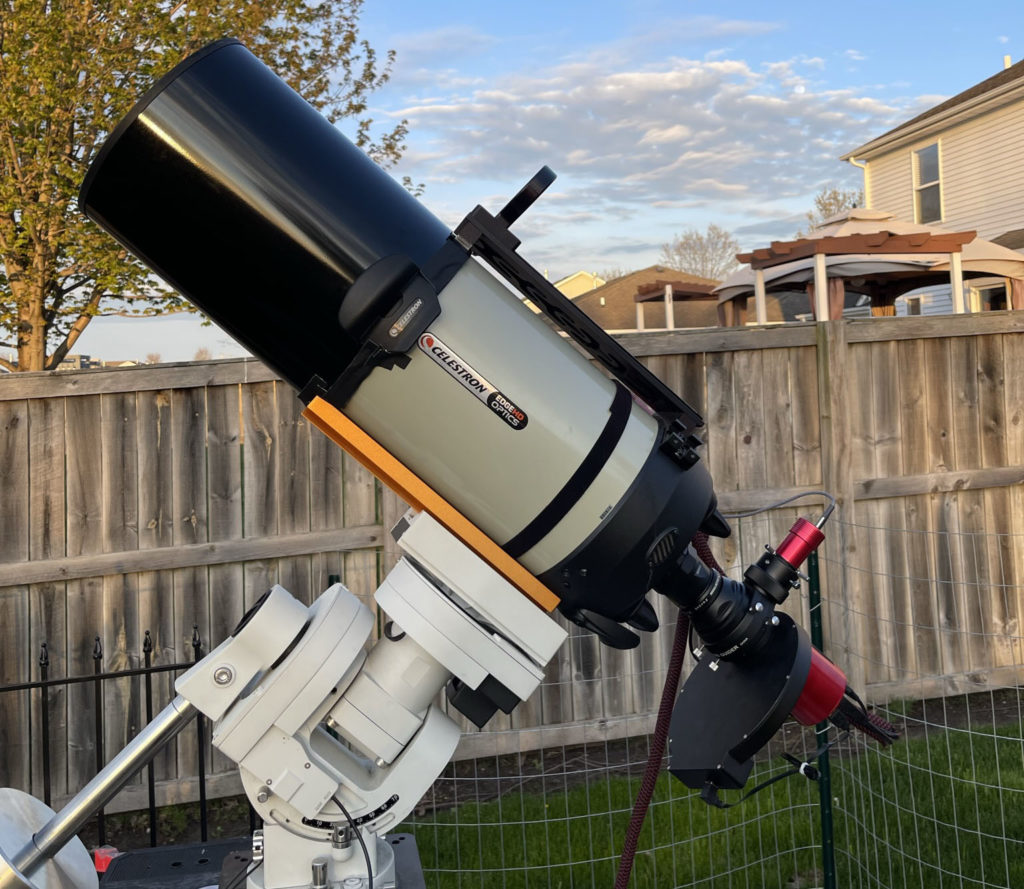
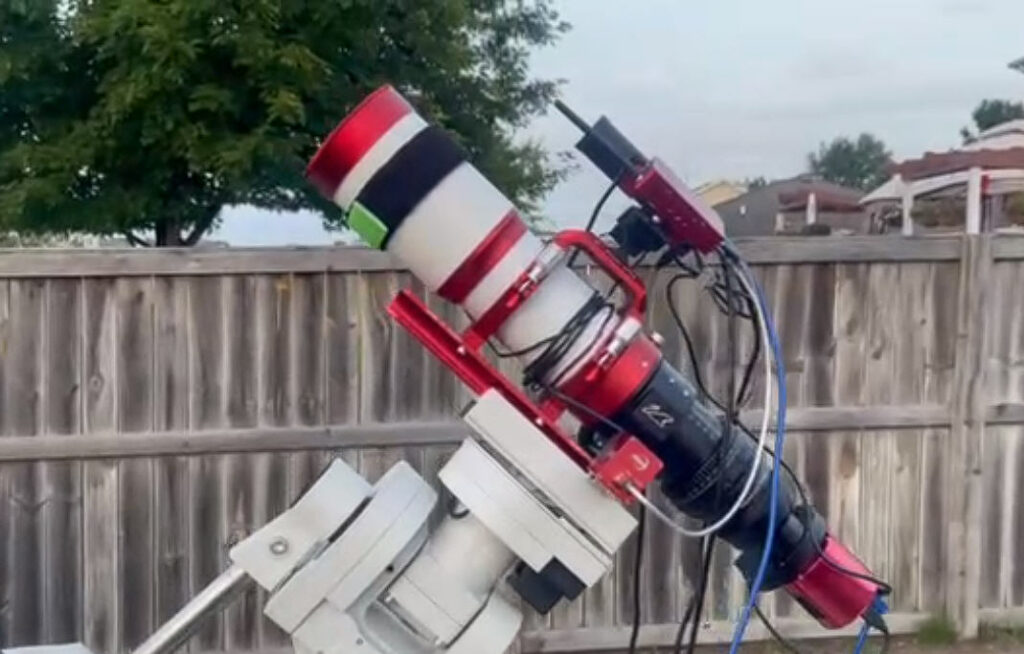
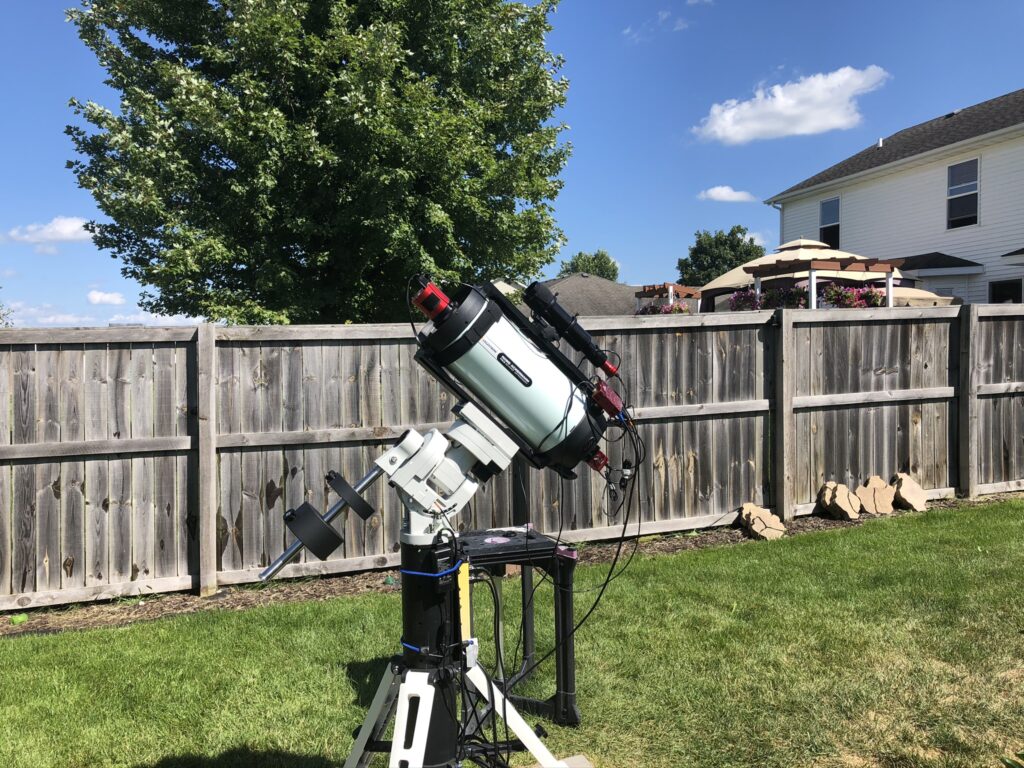
Allow me to introduce the three telescopes I currently employ for my astrophotography pursuits.
Firstly, for capturing images of distant galaxies, nebulae, and engaging in solar and planetary imaging, I rely on my Celestron EdgeHD 8″ Schmidt-Cassegrain telescope (SCT). I often affectionately refer to SCTs as the “Swiss Army Knife” of telescopes, particularly in the context of astrophotography. In my opinion, they stand out as the most versatile scopes due to their easy adaptability to different F ratios. Achieving an exceptionally fast F/2 speed is possible with the integration of Hyperstar systems, which can be installed in place of the secondary mirror. This modification not only facilitates swift image acquisition but also broadens the field of view significantly by reducing the focal length from a narrow 2030mm to 400mm. However, for my specific purposes, I opt for the EdgeHD with its 0.7 reducer, which alters the focal length to f/7 and 1432mm, providing ideal magnification for capturing galaxies, globular star clusters, and various nebulae. While operating at the slower f/10 with the native 2032mm focal length, I can still image distant galaxies and small planetary nebulae, although advancements in camera technology have made f/10 less sluggish compared to years past. I plan to revisit planetary imaging in the future, an area where SCTs excel. Adding a 2x or 3x Barlow lens can increase the focal ratio to f/20 or f/30, facilitating high-speed planetary video capture.
Moving on to my William Optics Fluorostar 91mm (FLT91) refractor, this telescope features an apochromatic triplet design, meaning it eliminates chromatic aberration by splitting incoming light into three channels (Red, Blue, and Green). This design ensures that there is no chromatic fringing (purple halo) around stars, a common issue found in older achromatic doublet refractors. With a native f/5.9 focal ratio and 540mm focal length, the FLT91 delivers exceptional clarity. Utilizing the 0.8x reducer further enhances its speed to f/4.6 with a focal length of 420mm. While not as swift as the next telescope in my arsenal, it is considerably lighter and more manageable for travel.
Finally, let me introduce my “Spaceball One at Ludicrous Speed!” setup, which isn’t technically a telescope but rather an astro-imaging system featuring the Celestron Rowe-Ackermann 8″ Astrograph, commonly referred to as the RASA8. Similar to when I mentioned the EdgeHD 8’s capability to reach f/2 with the addition of the Hyperstar, the RASA8 is purposefully engineered to operate at f/2, eliminating the need to replace the secondary mirror upfront. By directly linking my cameras to the front lens, I can capture images at the same 400mm focal length. With its substantial 8″ size, this system acts as a light collector, rapidly gathering photons, which enables me to sometimes complete multiple imaging sessions in a single night.
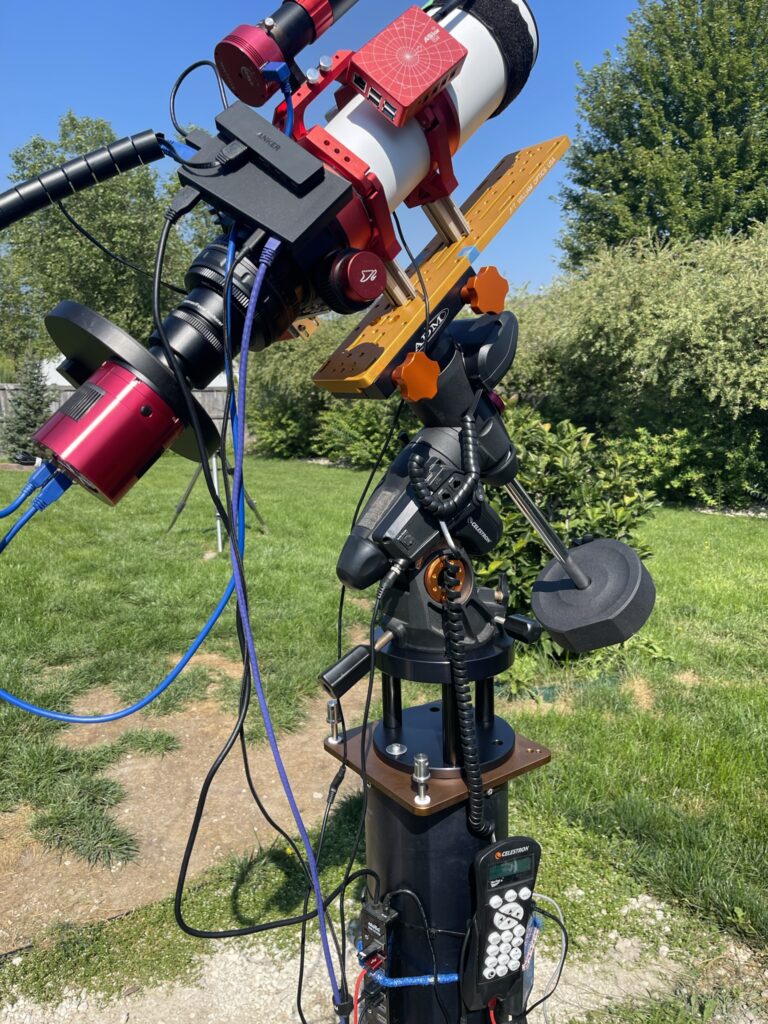
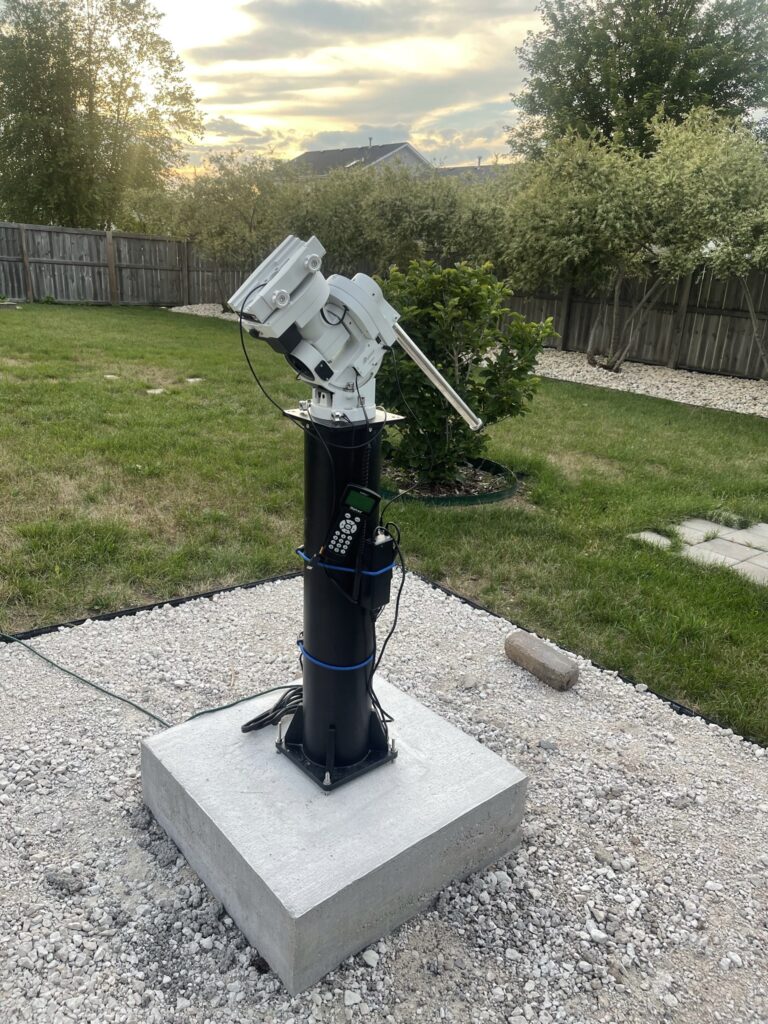
Before I speak on specifics of my mounts, let me preface with a question and an answer.
If any deep sky astrophotographer, regardless of their level of experience, were to approach me with the question, “Eric, what do you consider to be the three most crucial components of an astrophotography imaging setup?” My response would echo the advice I received when I first entered this hobby: “Well, first and foremost, there’s the mount. Secondly, there’s the mount. And lastly, oh yeah…THE MOUNT!!”
Let me be candid with you. It doesn’t matter what type of telescope, camera, or other equipment you acquire. If you don’t prioritize investing in the best possible EQ mount you can afford, whether brand new or second-hand, and diligently learn all about its nuances and intricacies, NOTHING ELSE MATTERS!!! PERIOD!!
The mount serves as the foundation of it all. Without a reliable equatorial mount, you cannot accurately track your celestial targets for long exposure imaging. You’d be fortunate to capture images lasting more than 20 seconds before noticing star trails. If you neglect to familiarize yourself with the mount’s operation and master polar alignment techniques, you’ll encounter difficulties with autoguiding. Ultimately, without the right equipment, you won’t have a fulfilling experience with deep sky astrophotography. And it all hinges on your mount.
I’ve had my fair share of both positive and challenging experiences with the EQ mounts I’ve owned, and I can honestly attribute some of the latter to my own impatience or lack of knowledge. But I’ll reiterate: without investing in a reliable EQ mount, NOTHING ELSE MATTERS!!
Now, with that bit of a rant out of the way, let me step off my soapbox because I think for the astrophotographers visiting my site, that was a bit of a speech to the choir. I have 2 EQ mounts, the Celestron Advanced VX or AVX, and the iOptron CEM60.
The AVX was my first equatorial mount purchase and the one I now reserve only for traveling. It’s a respectable, low-cost introductory EQ mount with a 3o-pound payload, but I try to keep it at half that weight if possible. Like other mounts in its price range, it does have its shortcomings. I sent the mount in for hyper-tuning by Deep-Sky Dad a few years ago, but TBH, the grease still sticks making it difficult to ensure proper balance, but again learning the intricacies of the mount has helped me know this mount’s characteristics and make it a good mount for me to travel with.
The iOptron CEM 60, is my workhorse. It rests atop an iOptron steel pier inside my observatory. I purchased it second-hand, and it too has gone through its share of pains. Most recently it was knocked over with my full rig in a severe storm and needed to be sent in for repair. But I will say my experience with the support team at iOptron has been nothing more than 5 stars. I will eventually retire this mount from regular use to strictly travel as I also have the tri-pier which makes a very stable platform.
The steel pier has been another great addition to stabilize my astrophotography rig, it’s bolted into a 17″ thick . steel mesh-lined concrete block joined to a 30″ deep, 12″ wide tube filled with concrete and 1/2″x 20′ rebar. The solid foundation has kept my need to polar align to a minimum, only checking every few months in the past 2 years and so far only, only needed to adjust 3 times.
While I no longer own this equipment, it was part of my journey in astrophotography for several years. Some of the images on the website are accredited to these items.
I will admit, I do miss the ZS126 and the Whitecat 51. (“Buy once, cry once” right Pete? LOL )
